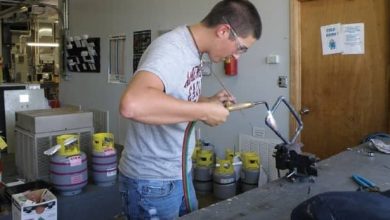Are Physical Therapists Doctors?

Physical therapists are movement experts who help people improve their quality of life by prescribing exercises, providing hands-on care, and educating patients. Many people have asked are physical therapists doctors? This article will answer this question and more.
Physical therapists assess and treat people of all ages, from newborns to those nearing the end of their lives. Many of the patients have injuries, disabilities, or other health issues that need to be addressed. PTs, on the other hand, help those who just want to get healthier and avoid future difficulties.
Physical therapists assess each individual and devise a treatment plan to help them move better, manage pain, regain function, and avoid disability.
Physical therapists have the ability to make a significant difference in people’s lives. They assist people in achieving fitness goals, regaining or maintaining independence, and maintaining an active lifestyle.
Related Post:Best Art Schools in the world
Is it true that physical therapists are doctors?
To begin, let us state unequivocally that physical therapists are not cheap doctors. They have received specialized training in physical therapy, recuperation, and preventative measures to safeguard the physical body. They know what it’s like to be in pain and how to get back on their feet. They understand the anxiety associated with surgery and strive to avoid it at all costs.
The New York Times published an article in October 2011 about the misuse of the term doctor in numerous medical fields, including physical therapy, pharmacy, and nursing. Because so many people claim the title of doctor, the author and an interviewee expressed concern that it might lose its meaning (being trained in the medical profession with the competence to prescribe medicine and diagnose medical concerns). The fact that physicians (or conventional doctors in this sense) must complete several years of additional study to receive the title of doctor, but the other occupations indicated above frequently simply require a bachelor’s degree, is a major source of contention. Beginning Physical therapists and nurses began to be required to get doctoral degrees prior to practicing their profession in 2015.
Related Post:Law Enforcement Colleges
Physical therapists have become doctors since 2015, although they are not physicians. They, like any dentist, nurse, doctor, surgeon, optometrist, orthodontist, or therapist, receive further training as needed for their specialized professional practice.
Physical therapists work in a variety of settings.
Hospitals, outpatient clinics, people’s homes, schools, sports and fitness facilities, workplaces, and nursing homes are all areas where physical therapists work.
How much money do physical therapists make?
Physical therapists earn an average of $85,000 a year. Salaries vary depending on the role, years of experience, education level, geographic area, and type of practice.
Physical therapist demand varies by geographic region and practice area, although unemployment rates for PTs are typically low across the country. Physical therapists are likely to be in high demand as the population of the United States ages and demand for their services rises.
Licensure and Education for Physical Therapists
You must receive a doctor of physical therapy degree from a Commission on Accreditation in Physical Therapy Education-accredited physical therapist education program and pass a state licensure exam to practice as a physical therapist in the United States.
Professional DPT programs are typically three years long. Biology/anatomy, cellular histology, physiology, exercise physiology, biomechanics, kinesiology, neuroscience, pharmacology, pathology, behavioral sciences, communication, ethics/values, management sciences, finance, sociology, clinical reasoning, evidence-based practice, cardiovascular and pulmonary, endocrine and metabolic disorders are just some of the primary content areas in the curriculum.
Classroom (didactic) and lab study account for around 80% of the DPT curriculum, with clinical education accounting for the remaining 20%. In their final clinical experience, PT students spend an average of 27.5 weeks.
How to Enroll in a DPT Program
The majority of DPT programs require applicants to have a bachelor’s degree before being accepted. Other programs use a 3+3 curricular framework, in which students must complete three years of particular preprofessional (undergraduate/pre-PT) courses before enrolling in a three-year professional DPT program.
A few programs accept freshmen immediately from high school, allowing pupils to enroll in a guaranteed admissions program. Accepted high school students can advance to the professional phase of the DPT program instantly, pending completion of required undergraduate courses and any other stated contingencies, such as a minimum GPA.
Post Graduation
To further their knowledge and practice, licensed physical therapists might enroll in a residency or fellowship program.
A clinical residency is intended to increase a physical therapist’s preparedness as a patient care provider in a specific clinical setting. It combines clinical supervision and mentorship opportunities with a theoretical foundation for advanced practice and scientific investigation.
A clinical fellowship is a structured program of post-professional clinical and didactic education for physical therapists who have demonstrated clinical proficiency in a clinical practice area related to the fellowship’s concentration. (Fellows are often post-residency or board-certified clinical professionals.)
The American Board of Physical Therapy Specialties offers physical therapists the chance to become board-certified clinical specialists. Specialization is the process through which a physical therapist develops a greater depth of knowledge and abilities linked to a specific area of practice by building on a broad base of professional education and experience. To practice in a given area, physical therapists do not need to be certified.
Physical therapy is beneficial for five reasons:
Pain Reduction
Let’s face it, no one wants to be in pain, and the cause isn’t always evident. Anyone who has experienced or continues to experience pain is aware of the negative impact it can have on one’s quality of life. Physical therapy, on the other hand, has been proved to be an effective treatment for both acute and chronic pain. Therapeutic exercise, soft tissue and joint mobilization, and other physical therapy techniques and modalities have been demonstrated to reduce or eliminate pain while also teaching patients self-remedies to help prevent future pain!
Surgery should be avoided.
When patients endure discomfort or impairment, surgery is generally the first choice that comes to mind. Although surgery is occasionally unavoidable, physical therapy can sometimes be an effective way to prevent surgery altogether. Physical therapy is increasingly being shown to be the first line treatment for a variety of musculoskeletal ailments, and giving it a try before going under the knife could be the key to avoiding unneeded surgery. Even if therapy does not avoid surgery, there is compelling evidence that therapy before surgery improves postoperative results!
After an injury, you can resume your normal activities.
Many of my coworkers were passionate fitness lovers and athletes throughout my tenure as a physical therapist. When you combine that with a background in physical rehabilitation, you have the perfect person to assist you in getting back to the things you enjoy. A physical therapist will take into account both the healing process and the physical demands of the activity when creating a specific plan to get you back on your feet as quickly as feasible.
Avoid Injuries
Most people seek physical therapy to help them recover after an injury or when they are in discomfort. However, one factor that is often forgotten is the significance of physical therapy in identifying areas of weakness and poor mobility that can lead to injury. When a physical therapist notices these flaws, he or she will devise a treatment plan to address them and possibly lessen the risk of injury. Unfortunately, many injuries are unavoidable; nevertheless, like with anything in life, being proactive is always preferable!
Improve your balance and avoid falling.
Falls among the elderly are common, dangerous, and can have a devastating impact on their quality of life. Over a quarter of seniors over the age of 65 (and that percentage grows with age!) will fall at least once this year, with many of them suffering serious repercussions. Physical therapists can assist avoid falls by evaluating patients and developing individualized therapy plans that include strengthening, mobility, and balance exercises. Also, provide education to patients and their families about simple strategies to lessen the risk of falling at home.
It would be difficult to summarize all of the benefits of physical therapy in a single short article, but I hope this has been helpful to people who may not be aware of their relevance. I’ve seen the benefits firsthand as a patient and as someone who has worked in the field. If you’re not sure if physical therapy is good for you, talk to your doctor or orthopedist about it, or just come down to one of our treatment clinics and we’ll be pleased to talk with you!
Frequently Asked Questions
What is a Doctor of Physical Therapy (DPT) degree and what does it entail?
All professional physical therapists must complete a full, hands-on PhD program in physical therapy. Over the course of two or three years, it incorporates clinical practice and intense academics.
The DPT program includes a full clinical education in addition to study. Students not only study hard in the classroom, but they also put in a lot of observation and practice time. Students learn about the musculoskeletal, cardiovascular, pulmonary, and metabolic systems, as well as a variety of other health-related topics.
After graduation, DPT programs prepare students to take the National Physical Therapy Exam for licensure. Today’s top programs, on the other hand, go beyond the fundamental anatomical and clinical applications of physical therapy. For example, Alabama State University’s program prepares students to:
- Recognize and comprehend the function of a PT expert for all patients in a diverse healthcare setting.
- To promote health and wellness in all communities, encourage evidence-based practice.
- Train lifelong learners who will become clinicians who will evolve as PT knowledge advances.
How much time does it take to get a DPT?
The majority of DPT programs take two to three years to complete. A professional immersion is included in the last one or two semesters of your training to simulate the experience of working as a PT expert. For example, students in the Pitt program must enroll for seven consecutive terms, the first of which begins in August.
Prerequisites for Admission
For consideration in a DPT program, students no longer need to have a master’s degree. The following are typical entrance requirements:
- A bachelor’s degree from a recognized university is required.
- A personal statement or applications essay
- Professional experience in physical therapy or occupational therapy is required.
- Scores on the GRE (depending on the program)
- Recommendation letters
- GPA requirement for undergraduates
- Courses in relevant sciences are required as prerequisites.
Options for a career as a Doctor of Physical Therapy (DPT).
Physical therapy has a wide range of expertise to choose from. Graduates can specialize in certain areas of medicine, such as oncology or neurology, or they can choose to care for specific groups, such as children or the elderly.
A list of some of the most common career opportunities for physical therapists can be seen below:
Physical therapist specializing in acute care
Patients in the hospital require a specialist at their side to regain basic mobility after a major accident or surgery. Acute physical therapists assist persons with severe illnesses with regaining movement in afflicted portions of their bodies, transferring within their beds, and preparing for hospital discharge.
Physical therapist who specializes on neurological conditions in adults
A neurological physical therapist is needed to treat damage to the nervous system, such as from a stroke, multiple sclerosis, or a spinal cord injury. The doctor’s knowledge of the nervous system and the precise pathways to recovery are the focus of the exercises.
Physical therapist specializing in cardiology and pulmonary medicine.
Patients who have had their heart or lungs damaged work with cardiac and pulmonary physical therapists to regain healthy movement and relieve pain. Asthma, lung cancer, and COPD are all common ailments in this category (chronic obstructive pulmonary disease).
Physical therapist for the elderly
Injury can occur when aging persons lose mobility, balance, and strength. During the COVID-19 pandemic, older people lost a substantial amount of range of motion, according to the Washington Post. The need for older people to regain their physical health and return to their daily routines is increasing, according to physical therapists.
Physical therapist who specializes in occupational therapy
Occupational therapists help their patients regain the abilities needed for activities of daily living, such as eating, self-care, and dressing, while physical therapy improves mobility and pain-relieving activities in general.
Physical therapist specializing in oncology
Patients recovering from cancer and the side effects of cancer therapies are helped by these experts. During a hospital or rehab stay, specialists can also prescribe exercises to keep patients active, peaceful, and pain-free.
Physical therapist specializing in orthopedics
An orthopedist, as the name implies, is knowledgeable with movement restrictions caused by bones, tendons, connective tissues, muscles, and joints. This doctor can handle everything from Lyme illness to plantar fasciitis.
Physical therapist for children
Pediatric physical therapy aids children with developmental difficulties in addition to assisting them with a variety of injuries and diseases. PT, according to the Hospital for Special Surgery, can help children acquire important motor skills, gain mobility at home and at school, and address communication issues (with the assistance of a speech pathologist).
Physical therapist for Athletes
Sports PT helps players regain motion after an injury in a variety of settings, including fitness facilities and outpatient rehab programs. Physical therapists may also recommend particular activities to assist prevent injury or alleviate discomfort.
Travel Physical Therapist
Individuals and businesses alike may want physical therapy services while on the road for a conference, medical leave, or competition. Physical therapists who travel work with a specific group or individual patient for several weeks or months at a time away from home are known as travel physical therapists.
Related Post:Esthetician School Online and Fees









